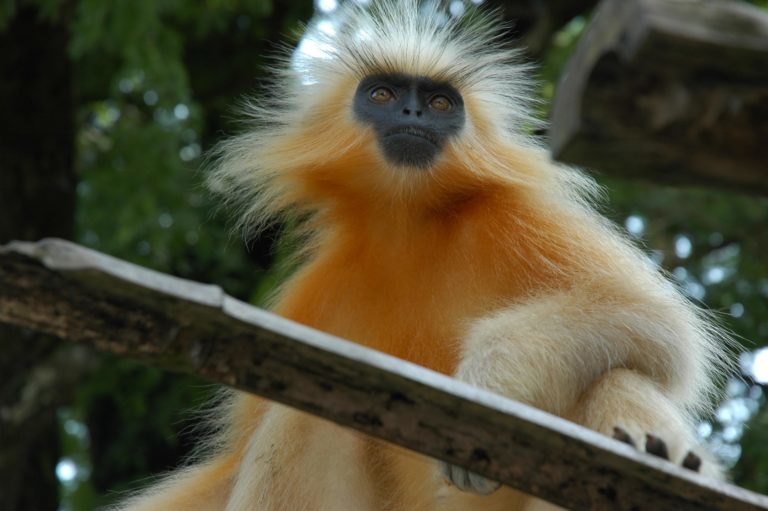- The Almost Famous series was created in the hope that familiarity will help generate concern and action for under-appreciated species. Glenn tells us all about how species get selected for coverage and his favorite animals profiled in the series.
- We also feature another installment of our Field Notes segment on this episode of the Newscast.
- Luca Pozzi, an evolutionary primatologist at the University of Texas, San Antonio, recently helped establish a new genus of galagos, or bushbabies, found in southeastern Africa. We play some of the calls made by galagos in the wild, and Luca explains how those recordings aid in our scientific knowledge about wildlife.
On this episode of the Mongabay Newscast, we welcome Mongabay contributing editor Glenn Scherer to the program. Glenn is responsible for Mongabay’s “Almost Famous Animals” series, which just wrapped up its second year with a focus on little-known Asian wildlife.
While some conservationists argue that protecting charismatic species like tigers, rhinos, and orangutans will also lead to the protection of less widely known species such as pangolins, langurs, and the Malayan tapir, that has not always been found to be the case. Many lesser known species often fall through the cracks.
The Almost Famous series was created in the hope that familiarity will help generate concern and action for these under-appreciated species. Glenn tells us all about how species get selected for coverage and his favorite animals profiled in the series so far.
We also feature another installment of our Field Notes segment on this episode of the Newscast. Luca Pozzi, an evolutionary primatologist at the University of Texas, San Antonio, recently helped establish a new genus of galagos, or bushbabies, found in southeastern Africa.
We play some calls made by galagos in the wild, and Luca explains how those recordings aid in our scientific knowledge about wildlife. (We also play the call of a new species of bushbaby announced around the same time as the new genus, the Angolan dwarf galago.)
Here are links to this episode’s top news:
- Proposed Trump policy threatens Critically Endangered Grauer’s gorilla
- Newly discovered gecko loses scales in ‘really bizarre’ behavior
- Survival of nearly 10,000 orangutans in Borneo oil palm estates at stake
- Environmental lawyer killed in the Philippines
- Climate change impacts on birds and mammals much more prevalent than reported
Want to stay up to date on all of Mongabay’s top news on the issues you follow closely? You can request email alerts when we publish new stories at Mongabay.com on specific topics that you care most about, from forests and oceans to indigenous people’s rights and more. Visit alerts.mongabay.com and sign up to keep on top of all your top issues.
Also, we’re excited to announce a new special reporting project that will explore the effectiveness of conservation projects in Madagascar. If you are a journalist with strong analytical skills, story-telling abilities, and experience in doing deep investigative reporting on complex issues, please visit mongabay.org/opportunities to learn more and send us your pitch. Travel funding is available, too.
If you enjoy this podcast, please write a review of the Mongabay Newscast in the Apple Podcasts app, iTunes store, Stitcher page, or wherever you get your podcasts from. Your feedback will help us find new listeners! Simply go to the show’s page on whichever platform you get it from and find the ‘review’ or ‘rate’ section: Stitcher, TuneIn, iTunes, Google Play, or RSS.

FEEDBACK: Use this form to send a message to the author of this post. If you want to post a public comment, you can do that at the bottom of the page.